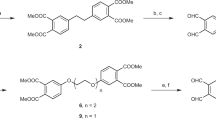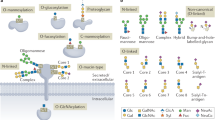Abstract
IDENTIFICATION of the free amino-groups of proteins by converting them into N-2 : 4-dinitrophenyl derivatives was first introduced by Sanger1. Since then, several workers have evolved chromatographic methods for the separation of the dinitrophenyl amino-acids.
This is a preview of subscription content, access via your institution
Access options
Subscribe to this journal
Receive 51 print issues and online access
$199.00 per year
only $3.90 per issue
Buy this article
- Purchase on Springer Link
- Instant access to full article PDF
Prices may be subject to local taxes which are calculated during checkout
Similar content being viewed by others
References
Biochem. J., 39, 507 (1945).
Nature, 165, 403 (1950).
Nature, 164, 501 (1949).
Biochem. J., 47, 443 (1950).
Author information
Authors and Affiliations
Rights and permissions
About this article
Cite this article
LOWTHER, A. Identification of N-2 : 4-Dinitrophenylamino-Acids. Nature 167, 767–768 (1951). https://doi.org/10.1038/167767b0
Issue Date:
DOI: https://doi.org/10.1038/167767b0
This article is cited by
-
Initial site of cleavage towards oxidized B-chain of insulin by thermophilicStreptomyces alkaline proteinase
Current Microbiology (1981)
-
Zur chemischen Zusammensetzung der Zellwand der Streptokokken
Archiv f�r Mikrobiologie (1967)
-
Presence of a Threonine-containing Phospholipid in Tunny Muscle
Nature (1958)
Comments
By submitting a comment you agree to abide by our Terms and Community Guidelines. If you find something abusive or that does not comply with our terms or guidelines please flag it as inappropriate.



